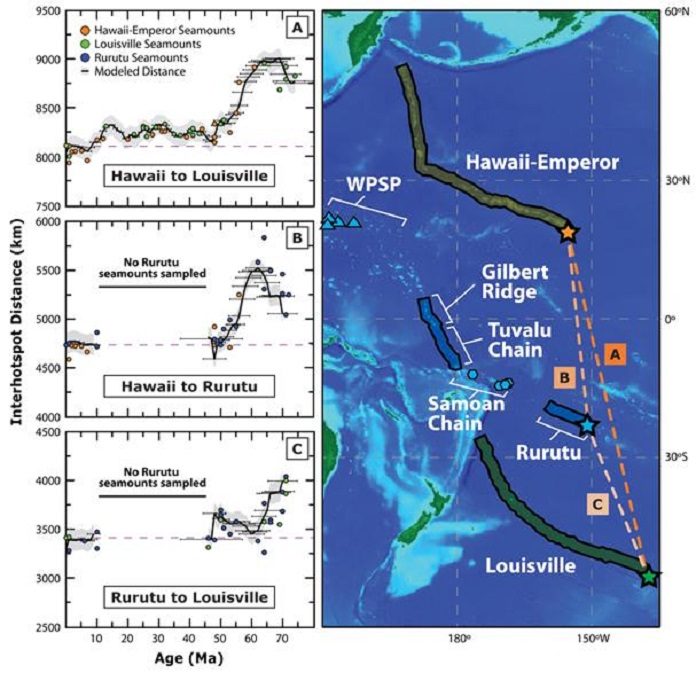The island chain of Hawaii comprises of a few volcanoes, which are nourished by a “hotspot”. In geosciences, a “hotspot” alludes to a phenomenon of columnar-shaped streams, which transport hot material from the deep mantle to the surface. Like a bright light, the material burns by the Earth’s crust and generate volcanoes.
For quite a while, it was expected that these hotspots are stationary. On the off chance that the structural plate moves crosswise over it, a chain of volcanoes advances, with the youngest volcano at one side, the oldest at the other.
This idea was at first proposed for the Hawaiian Islands as they were the youngest end of the Hawaiian-Emperor chain that lies underneath the Northwest Pacific. However, soon there was a question about whether hotspots are really stationary. The greatest inconsistency was a striking twist of around 60 degrees in this volcanic chain, which began 47 million years back.
Bernhard Steinberger of the GFZ German Research Center for Geosciences said, “If you try to explain this bend with just a sudden change in the movement of the Pacific Plate, you would expect a significantly different direction of motion at that time relative to adjacent tectonic plates.”
“But we have not found any evidence for that.” Recent studies have suggested that apparently, two processes were effective: On the one hand, the Pacific Plate has changed its direction of motion. On the other hand, the Hawaiian hotspot moved relatively quickly southward in the period from 60 to about 50 million years ago – and then stopped. If this hotspot motion is considered, only a smaller change of Pacific plate motions is needed to explain the volcano chain.”
Scientists evaluated new rock dating of volcanoes in the Rurutu volcanic chain, including, for example, the Tuvalu volcanic islands in the Western Pacific. They then added similar data from the Hawaiian-Emperor chain and the Louisville chain in the Southern Pacific.
In view of the geology and the period of volcanoes in these three chains, scientists can investigate the land past and perceive how the three hotspots have moved with respect to each other more than a large number of years.
According to the study published in journal Nature Communications, the relative motion of hotspots under the Rurutu and Louisville is small while the Hawaiian-Emperor hotspot displays strong motion between 60 and 48 million years ago relative to the other two hotspots.
Steinberger said, “This makes it very likely that mainly the Hawaii hotspot has moved. Our models for the motion of the Pacific Plate and the hotspots therein still have some inaccuracies. With more field data and information about the processes deep in the mantle, we hope to explain in more detail how the bend in the Hawaiian-Emperor chain has evolved.”
